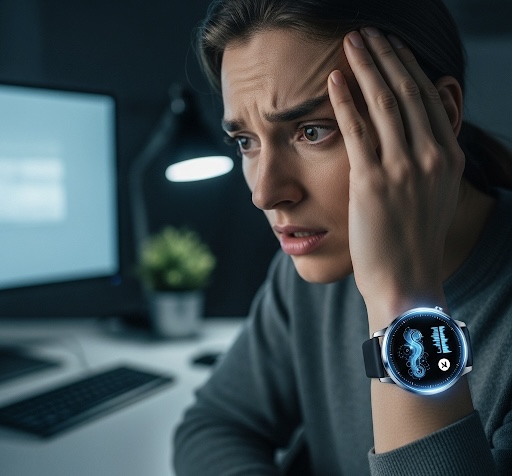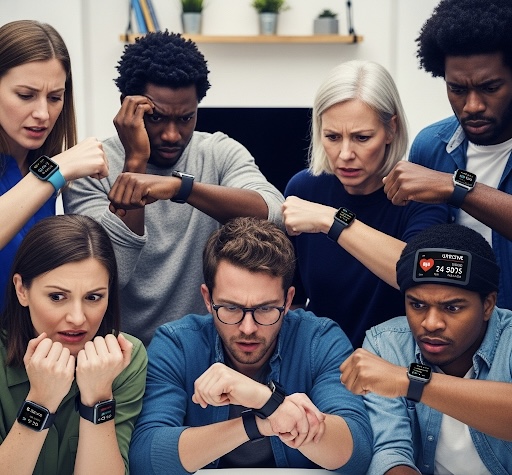Rethinking the Role of Wearable Tech in Managing Well-Being
In the age of smartwatches, rings, and trackers, we’re constantly nudged to “close our rings,” “hit our step goal,” or “lower our stress score.” On the surface, it feels empowering—having real-time access to our health metrics. But when it comes to stress tracking, are wearables actually helping us take control of our mental well-being, or are they promoting a misleading and narrow understanding of stress?
A recent study by van den Berg et al. (2025) digs deep into this very question—and their findings are eye-opening.
The Promise of Stress-Tracking Wearables
Wearables like the Garmin, Galaxy Watch, and Oura Ring promise to track your stress 24/7 using physiological signals such as heart rate variability (HRV). These signals are transformed into sleek visuals and scores—usually on a scale from 0 to 100—aimed at helping you make lifestyle choices to “reduce stress.”
In theory, it’s a compelling offer. After all, excessive stress is linked to serious health issues like cardiovascular disease, anxiety, and burnout. Early detection and management can make a big difference.
But here’s the catch: What exactly are these devices measuring? And more importantly—are they measuring what matters?

What Is HRV—and Why Does It Matter?
Heart Rate Variability (HRV) is the variation in time between heartbeats. Instead of beating at a perfectly steady pace, your heart constantly speeds up and slows down in response to your breathing, emotions, activity level, and nervous system input.
HRV is considered a proxy for stress because it’s tightly linked to the autonomic nervous system. Here’s how it works:
- High HRV usually indicates a relaxed state, with a balanced nervous system and the ability to adapt to stress.
- Low HRV suggests that the body is under strain—potentially stressed, fatigued, or unwell.
Because it’s measurable via non-invasive optical sensors (like those in wrist wearables or rings), HRV has become the go-to metric for detecting stress.
But here’s the complication: HRV isn’t a direct measure of mental stress. It’s influenced by a variety of factors—including sleep, hydration, medication, exercise, digestion, illness, and even breathing patterns. So, interpreting HRV out of context can lead to confusing or misleading stress scores.
Five Key Issues with Current Stress-Tracking Technology
The research team identifies five major concerns with how stress-tracking tools are currently designed and used:
1. Flawed Conceptualization
Wearables define stress solely in terms of body signals like HRV. But stress is also emotional and situational. Users often think of stress as “mental pressure,” which can’t be fully captured by HRV alone.
2. Misleading Measurements
Physiological stress signals overlap with many everyday activities. Devices may flag a high HRV spike after exercise or a spicy meal as “stress.” And if your HRV naturally varies from the norm due to age, health, or genetics, your score might be off—despite feeling fine.
3. Lack of Transparency
Stress scores are calculated using proprietary algorithms that aren’t visible to users. This “black box” approach makes it hard to understand what the score truly means—or how to act on it.
4. Problematic Visualizations
Many wearables use color codes (e.g., red = bad, green = good) to represent stress. But not all stress is bad. Exciting moments—like giving a speech or dancing—can increase stress scores, even though they’re positive experiences.
5. Disproportionate Responsibility
These devices subtly suggest that individuals are solely responsible for managing their stress. But real-world stressors—like job insecurity, family demands, or discrimination—can’t always be “fixed” by a deep breath or a walk.

CuesHub’s Take: Make Peace with the Complexity
At CuesHub, we believe that stress is complex. Some of it is harmful and chronic—but some of it is productive, energizing, or simply part of life. Wearables can’t tell the difference by only measuring arousal.
So next time your wearable sends an alert that your stress is “too high,” pause. Ask yourself:
Am I really stressed?
References
van den Berg, M. K. N., Karahanoğlu, A., Noordzij, M. L., Maeckelberghe, E. L. M., & Ludden, G. D. S. (2025). Why we should stress about stress scores: Issues and directions for wearable stress-tracking technology. Interacting with Computers, 1–10. https://doi.org/10.1093/iwc/iwaf036

